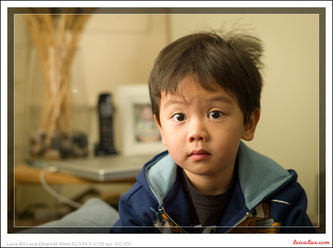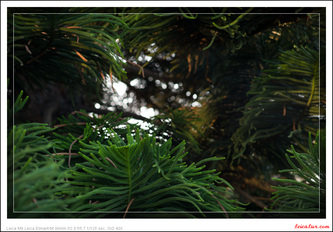The plugin isn't fully compatible with Weebly (where my site is hosted), so I had to tweak the CSS from fotomoto a little bit to make it show better. Sadly, it also doesn't work with the slideshow widget. However, for something that's fairly easy and free to implement, I can't really complain... in fact, I like how it's not very intrusive and not make me look like I'm pushing people to buy all
|
I've enable a little plugin from fotomoto that will enable purchase options when you click on an image to view it in the lightbox (enlarged) mode. There are a lot of options available from little postcards to large canvas or fine art prints. Of course, I don't plan to get rich from selling my photos, but it may come in handy one day. Who knows, I might be tempted to buy one myself some day. There's also an "eCard" option that'll allow you to send an email to someone with the image attached like a greeting card.
The plugin isn't fully compatible with Weebly (where my site is hosted), so I had to tweak the CSS from fotomoto a little bit to make it show better. Sadly, it also doesn't work with the slideshow widget. However, for something that's fairly easy and free to implement, I can't really complain... in fact, I like how it's not very intrusive and not make me look like I'm pushing people to buy all
0 Comments
 It's been a while since my last gear review... mostly because I'm not really qualified, but since some people have asked, I thought I'd write a few words give some personal impressions of this lens. Why 28mm? First, some basic information. 28mm is the widest focal length on a full-frame Leica M camera that you can use with built-in framelines, if you don't want to bother with external viewfinders. Leica shooters have long argued the advantage of having a fixed magnification viewfinder with framelines is better than liveview viewfinders (You see exactly what the sensor see) is the ability to see outside of the frame, allowing the photographer to better compose and anticipate action. Well, 28mm is kind of pushing it, because you don't really see much outside of the frameline and for someone wearing glasses, you might have trouble seeing the entire frameline easily.  What's up with the hood? Well, most 28'Cron owners will complain about the giant hood that Leica has paired with this lens. They did release special rounded hood for 28mm later, part #12466. In my own experience, I don't really mind. I bought an aftermarket 46mm screw-on hood, but never really used it. The hood is also thicker than other hoods I've seen, so it will offer solid protection against accidents. My only complaint is the large hood takes up a lot of room in the bag. I suspect the reason for the large hood is the problem with vignette. In less than ideal lighting (dark), I find the 28'Cron can sometimes show pretty heavy vignette, even with the large hood. However, since I often add in artificial vignette in post-processing, I actually like it. If you take the hood off, then the lens seems much more normal and diminutive. What about image quality (IQ)? Now we're talking. I've tried several other lenses before settling down with the 28'Cron, namely the Leica 28mm Elmarit-M and the Zeiss 25mm Biogon. In the end, I just felt that I needed a faster lens for in-door situations. Once I tried out the 28mm'Cron, I quickly sold the others because I love the images I get from it. The 28'Cron has a much deeper depth of field than I'm used to on a 35mm or 50mm lens. Even with the aperture set at f/2 and shooting a close subject, the background will never get blurred out of existence. For that reason, I love it for environmental shots where the background is just as important as the foreground, and I won't be afraid of shooting with f/2 all the time because I know the background still show up. Chromatic Aberration (CA) is also well controlled when shooting wide open. I can't quite pin point it, but it has its own character when rendering an image... it's plenty sharp and very contrasty.  Its usefulness? 28mm is not extremely wide, so I often shoot with it all day long when going outdoors. You can still get a normal-like shot if you just take a few steps closer, and I don't find distortion much of an issue. Some street shooters actually prefer the 28mm focal length. Beside being wider, it's deeper depth of field also means there is less of a chance of missing critical focus. If you look at the distance scale image, you can easily set a zone-focus between 2-5 meters for f/4, or change the aperture to f/8 and get the hyperfocal distance to start from close to just 6 feet away! That's extremely useful when you don't have much time to carefully focus on your subjects. While I wouldn't recommend this to be your one and only lens, I think this will make a great pair with a fast 50mm, like the 50'Lux. So that's it. My search is over and the 28'Cron is here to stay. Nowadays, if I'm going out with a single lens in mind, I'll take the 35'Cron for day and 50'Lux for night, otherwise, it's pretty much always the 28-50-90 combo, and I'll mount the 28mm first. I've started tagging my posts with the lenses used, so if you wish to see some sample images, you can just click on the "28'Cron ASPH" tag on the right side of the page.  In trying to get to know the 90mm Elmarit-M lens, I've had it mounted on the M9 for the past couple of weeks. I find that to be the best way for me to get acquainted to a new lens... just shoot with it non-stop for a month or so, then you'll know all its virtues and faults. It doesn't have the biting sharpness unless you stop it down to f/8 or so, however, it is wonderful for portraits at wider apertures. My copy of the lens has a slight front-focus at f/2.8 and 1 meter away, but once I stop down to f/4, it is negligible. I have not had any chance to go out to shoot at all, so I've been confined to just use my backyard the best I can, and in the house when the light is good. What I've discovered is that this lens is amazing for taking portraits. While I wouldn't hesitate to use it to shoot some flowers or landscape, I find it is simply amazing for portraiture photography. Being a tele-photo lens, it is capable of producing pleasing bokeh to separate the background from the subject. Also, it's softer rendering at wide aperture is flattering for human subjects. I had previously loved to use my 50mm Summilux ASPH for taking portraits, and sometimes I do have to work a bit harder to get the beautiful out-of-focus background, but with the 90mm Elmarit-M, it is so easy. Here are a few more portraits of my son, and a shot of our pine tree to show its sharpness and nice color rendering:  Just about 3 months ago, I posted the unboxing video of this lens that I've bought used from an internet forum. I was so excited, because of the endless praises it had received, with some even touted it to be the "best 50mm lens ever made". Now that I've had ample time to use it almost everyday, I feel that I can finally make a judgement and share some of my thoughts on this lens. There's an old saying: "Good, fast, or cheap -- pick any two." While it may hold true for most things, I believe the 50'Lux could well be the exception to that rule. Although it isn't exactly cheap, it is certainly affordable, or obtainable, if you really think you want it and willing to save for it. With a max aperture of f/1.4, it definitely fulfills the name that it was given ("summi" = maximum, "lux" = light), and it's only bested by the Noctilux ("nocti" = night) in the Leica line of 50mm lenses. Just how good is it? |
AuthorDavid Young Archives
October 2023
Categories
All
|









 RSS Feed
RSS Feed

